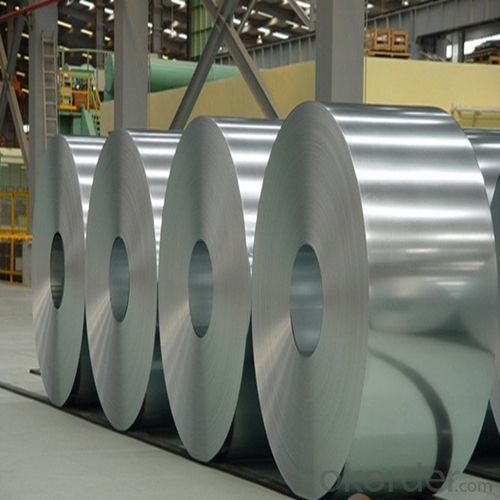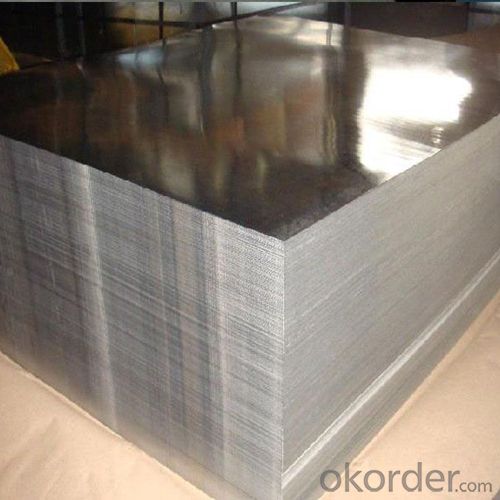Electrolytic Tinplate Food Can Packaging
- Loading Port:
- Tianjin
- Payment Terms:
- TT or LC
- Min Order Qty:
- 25 m.t
- Supply Capability:
- 7000 m.t/month
OKorder Service Pledge
OKorder Financial Service
You Might Also Like
1.Structure of Electrolytic Tin Plate Coils and Sheets for Foods Metal Packaging Description
Electrolytic Tin Plate Coils and Sheets for Foods Metal Packaging, is one thin steel sheet with a coating of tin applied by electrolytic deposition. Tinplate made by this process is essentially a sandwich in which the central core is strip steel. This core is cleaned in a pickling solution and then fed through tanks containing electrolyte, where tin is deposited on both sides. As the strip passes between high-frequency electric induction coils, it is heated so that the tin coating melts and flows to form a lustrous coat.
2.Main Features of the Electrolytic Tin Plate Coils and Sheets for Foods Metal Packaging
The feature of anti-oxidation, various kinds and beauty in printing enable tinplate enjoys widely usage in food can package, pharmaceutical package, daily application packing, apparatus package and industrial pack.
From the first food can to be produced in the year of 1810 in British, the development trend of tinplate has become thinner thickness and less tin coating to adjust the change of can industry and save cost.
3.Electrolytic Tin Plate Coils and Sheets for Foods Metal Packaging Images



4.Electrolytic Tin Plate Coils and Sheets for Foods Metal Packaging Specification
Standard | ISO 11949 -1995, GB/T2520-2000,JIS G3303,ASTM A623, BS EN 10202
|
Material | MR,SPCC |
Thickness | 0.15mm - 0.50mm |
Width | 600mm -1150mm |
Temper | T1-T5 |
Annealing | BA & CA |
Coil Inner Diameter | 508mm |
Weight | 6-10 tons/coil 1~1.7 tons/sheets bundle |
Passivation | 311 |
Oil | DOS |
Surface | Finish,bright,stone,matte,silver |
5.FAQ of Electrolytic Tin Plate Coils and Sheets for Foods Metal Packaging
- How are the Electrolytic Tin Plates specified?
The Electrolytic Tin Plates are specified as per the steel base, extent of tempering, the coating weight, annealing method and the surface finish.
- How many types there are for base steels?
The base steels are of three types: Type MR, L, D
-What your tinplate material is used for ?
Tinplate is widely used for the packaging of products. Such as food cans,
beverage cans, pet cans, closures, general line cans and so on.
Printed Tinplate is offered!!
-How to place .an order or contact you ?
Please send us Email. we will give you a quick response in seconds .
- How is your quality ?
All our quality is prime even the secondary quality . We have many years experience
In this field with serious quality control standard . Advanced equipment, We welcome your visit to our factory .
- Q:What are the different methods of sealing tinplate containers?
- There are several methods of sealing tinplate containers including soldering, crimping, welding, and using adhesive or pressure-sensitive seals.
- Q:Can tinplate be used for furniture?
- Yes, tinplate can be used for certain types of furniture, particularly for creating decorative elements or accents. However, it is not commonly used as the primary material for furniture due to its relatively low strength and durability compared to other metals like steel or aluminum.
- Q:What are the main factors influencing the supply of tinplate?
- The main factors influencing the supply of tinplate include the availability and cost of raw materials such as tin and steel, technological advancements in tinplate production, government regulations and trade policies, demand for tinplate in various industries, and overall economic conditions affecting the manufacturing sector.
- Q:How does tinplate packaging handle exposure to different chemicals?
- Tinplate packaging is known for its excellent resistance to various chemicals, making it a reliable choice for storing and transporting a wide range of products. It can handle exposure to different chemicals without significant degradation or contamination.
- Q:What are the limitations of printing on tinplate?
- There are several limitations to consider when printing on tinplate. First, tinplate is not a very smooth surface, which can affect the quality and resolution of the printed design. Secondly, tinplate is prone to corrosion, so special coatings or treatments may be required to ensure the longevity of the print. Additionally, tinplate is a rigid material, making it more challenging to print on curved or irregularly shaped objects. Lastly, the printing process on tinplate can be more time-consuming and costly compared to other printing methods, as it often requires specialized equipment and inks.
- Q:Can tinplate be used for jewelry and fashion accessories?
- Yes, tinplate can be used for jewelry and fashion accessories. Tinplate is a versatile material that can be shaped and molded into various designs, making it suitable for creating fashionable and trendy accessories. Additionally, tinplate can be coated with different finishes such as gold or silver, further enhancing its appeal for use in jewelry and fashion accessories.
- Q:Can tinplate be used for industrial or automotive applications?
- Yes, tinplate can be used for industrial or automotive applications. Tinplate is a commonly used material in industries and automotive manufacturing due to its durability, corrosion resistance, and ability to withstand high temperatures. It is often utilized for making cans, containers, electrical components, automotive parts, and various other industrial applications.
- Q:What are the different ways to label tinplate packaging?
- There are several ways to label tinplate packaging, including using adhesive labels, direct printing on the surface, embossing or debossing the tinplate, or using lithography to transfer a design onto the packaging.
- Q:What are the main countries producing tinplate?
- The main countries producing tinplate are China, Japan, South Korea, and the United States.
- Q:Can tinplate be used for packaging electronic components?
- Yes, tinplate can be used for packaging electronic components as it provides excellent protection against corrosion, offers good electrical conductivity, and is easy to shape into various packaging forms.
1. Manufacturer Overview |
|
|---|---|
| Location | |
| Year Established | |
| Annual Output Value | |
| Main Markets | |
| Company Certifications | |
2. Manufacturer Certificates |
|
|---|---|
| a) Certification Name | |
| Range | |
| Reference | |
| Validity Period | |
3. Manufacturer Capability |
|
|---|---|
| a)Trade Capacity | |
| Nearest Port | |
| Export Percentage | |
| No.of Employees in Trade Department | |
| Language Spoken: | |
| b)Factory Information | |
| Factory Size: | |
| No. of Production Lines | |
| Contract Manufacturing | |
| Product Price Range | |
Send your message to us
Electrolytic Tinplate Food Can Packaging
- Loading Port:
- Tianjin
- Payment Terms:
- TT or LC
- Min Order Qty:
- 25 m.t
- Supply Capability:
- 7000 m.t/month
OKorder Service Pledge
OKorder Financial Service
Similar products
New products
Hot products
Related keywords


























